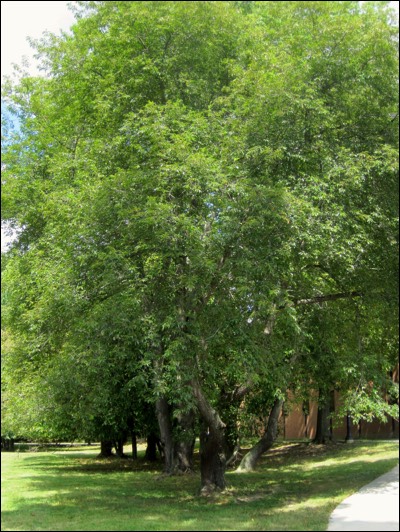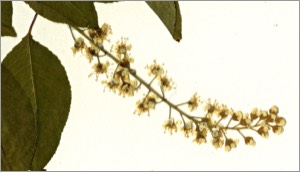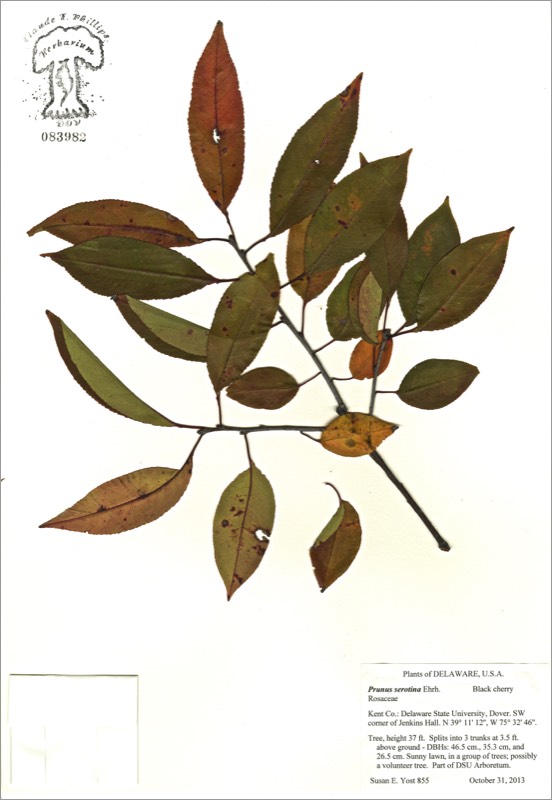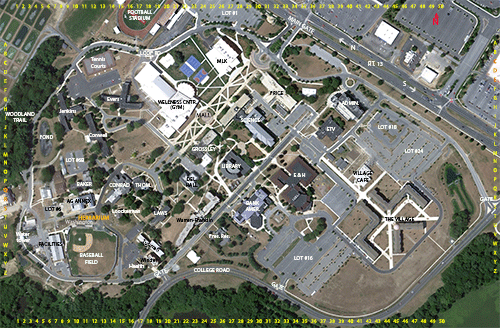Black cherry


Prunus serotina
BLACK CHERRY
Rosaceae
E. North America
Location: map coordinates K-8 (southwest of Jenkins Hall),
N 39°11'12'' W 75°32'46''
Planting history: presently unknown (possibly a volunteer).
Description:
Native species, State Rank S5 (very common in Delaware)
BLACK CHERRY
Rosaceae
E. North America
Location: map coordinates K-8 (southwest of Jenkins Hall),
N 39°11'12'' W 75°32'46''
Planting history: presently unknown (possibly a volunteer).
Description:
- large deciduous tree
- etymology: Prunus = Latin name for plum tree; serotina = late (flowering)
- leaves alternate, relatively long and narrow, toothed; midrib of lower surface has a fringe of brown hairs
- flowers white, in narrow clusters (racemes)
- fruit, blackish, small drupe (stone fruit); edible, sour, used to make jelly; also important food for wildlife
- bark on mature trees dark, rough, with horizontal lines (lenticels); small branches reddish
- shade-intolerant
- scratched twig has rank odor; leaves and inner bark contain hydrocyanic acid; wilted, these can be toxic to deer and cattle
- wood hard; valued for lumber. Used for furniture for its reddish-brown color and ability to polish
Native species, State Rank S5 (very common in Delaware)


HIT REFRESH TO START LOCATION GRAPHIC